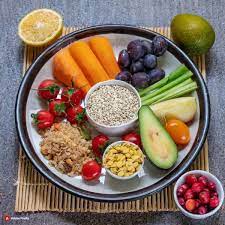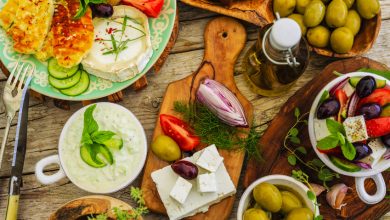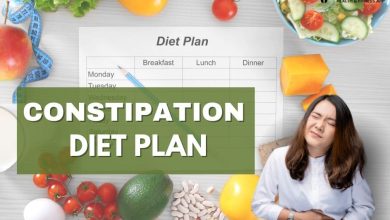30-Day Heart-Healthy Meal Plan for High Blood Pressure—Created by a Dietitian

High blood pressure, also known as hypertension, affects nearly half of adults worldwide and is one of the leading risk factors for heart disease, stroke, and kidney complications. Fortunately, lifestyle changes—especially diet—can dramatically improve blood pressure control and overall cardiovascular health.
The right eating plan can act like medicine. In fact, research shows that dietary changes such as the DASH diet (Dietary Approaches to Stop Hypertension) and the Mediterranean diet can lower blood pressure within just a few weeks. These eating patterns focus on whole, nutrient-rich foods while limiting sodium, processed ingredients, and added sugars.
This 30-day heart-healthy meal plan was carefully designed by a dietitian to help individuals with high blood pressure reduce risk, improve energy, and enjoy delicious meals. It is balanced, flexible, and practical for everyday life.
Why Diet Matters for High Blood Pressure
Before diving into the meal plan, it’s important to understand why food plays such a vital role:
- Sodium intake: Too much sodium causes the body to retain water, which increases blood volume and raises blood pressure.
- Potassium, magnesium, and calcium: These minerals help relax blood vessels, regulate fluid balance, and counteract sodium’s effects.
- Fiber-rich foods: Whole grains, fruits, and vegetables lower cholesterol and improve vascular health.
- Healthy fats: Omega-3 fatty acids from fish, nuts, and seeds support heart function and reduce inflammation.
- Weight management: A balanced diet supports a healthy weight, which significantly reduces blood pressure risk.
Key Principles of the 30-Day Plan
- Low in sodium – No more than 1,500–2,000 mg per day.
- Rich in potassium, calcium, and magnesium – Found in leafy greens, legumes, nuts, seeds, and low-fat dairy.
- Emphasis on whole foods – Vegetables, fruits, lean proteins, whole grains, and healthy fats.
- Minimal processed foods – Limiting packaged snacks, fast food, and sugary beverages.
- Moderation, not deprivation – The plan is flexible, with room for variety and personal preferences.
30-Day Heart-Healthy Meal Plan
This plan provides breakfast, lunch, dinner, and snacks for four weeks. Portions can be adjusted depending on individual calorie needs, but the foundation remains consistent.
Week 1
Day 1
- Breakfast: Oatmeal topped with blueberries, walnuts, and a sprinkle of cinnamon.
- Snack: Carrot sticks with hummus.
- Lunch: Quinoa salad with chickpeas, cucumber, tomato, parsley, and lemon-olive oil dressing.
- Dinner: Grilled salmon, roasted Brussels sprouts, and brown rice.
Day 2
- Breakfast: Greek yogurt with sliced strawberries and chia seeds.
- Snack: Apple slices with almond butter.
- Lunch: Turkey and avocado whole-grain wrap with spinach.
- Dinner: Lentil soup with a side of whole-grain bread and a mixed greens salad.
Day 3
- Breakfast: Whole-grain toast with mashed avocado and cherry tomatoes.
- Snack: A banana with a handful of unsalted almonds.
- Lunch: Baked chicken breast with steamed broccoli and sweet potato.
- Dinner: Grilled shrimp, quinoa, and sautéed spinach with garlic.
Day 4
- Breakfast: Smoothie with spinach, frozen berries, banana, and unsweetened almond milk.
- Snack: Cucumber slices with tzatziki.
- Lunch: Black bean salad with corn, peppers, cilantro, and lime.
- Dinner: Baked cod with roasted zucchini and wild rice.
Day 5
- Breakfast: Scrambled eggs with spinach and whole-grain toast.
- Snack: Pear with a handful of walnuts.
- Lunch: Grilled vegetable sandwich on whole-grain bread with hummus spread.
- Dinner: Turkey chili with kidney beans and brown rice.
Day 6
- Breakfast: Overnight oats with almond milk, flaxseeds, and diced apples.
- Snack: Baby carrots and bell peppers with hummus.
- Lunch: Mediterranean tuna salad with olive oil, olives, and arugula.
- Dinner: Grilled chicken, roasted cauliflower, and quinoa.
Day 7
- Breakfast: Cottage cheese with pineapple and chia seeds.
- Snack: A handful of mixed nuts.
- Lunch: Whole-grain pita stuffed with falafel, lettuce, tomato, and tahini sauce.
- Dinner: Baked salmon with roasted asparagus and barley.
Week 2
Day 8
- Breakfast: Vegetable omelet with mushrooms, peppers, and spinach.
- Snack: Celery sticks with almond butter.
- Lunch: Quinoa bowl with roasted sweet potatoes, chickpeas, kale, and tahini dressing.
- Dinner: Baked trout with steamed broccoli and wild rice.
Day 9
- Breakfast: Smoothie with kale, banana, flaxseed, and oat milk.
- Snack: Handful of pumpkin seeds.
- Lunch: Grilled chicken Caesar salad with yogurt-based dressing.
- Dinner: Lentil curry with brown rice and roasted carrots.
Day 10
- Breakfast: Overnight oats with berries and sunflower seeds.
- Snack: Apple with peanut butter.
- Lunch: Turkey quinoa bowl with avocado and black beans.
- Dinner: Grilled salmon with sautéed kale and roasted potatoes.
Day 11
- Breakfast: Yogurt with sliced kiwi, oats, and chia.
- Snack: Baby bell peppers with hummus.
- Lunch: Mediterranean chickpea salad.
- Dinner: Baked cod with spinach and bulgur wheat.
Day 12
- Breakfast: Avocado toast with pumpkin seeds and cherry tomatoes.
- Snack: Orange slices with almonds.
- Lunch: Whole-grain wrap with hummus, roasted vegetables, and spinach.
- Dinner: Chicken stir-fry with broccoli, peppers, and brown rice.
Day 13
- Breakfast: Vegetable smoothie with spinach, cucumber, pineapple, and ginger.
- Snack: A handful of walnuts.
- Lunch: Lentil and vegetable soup.
- Dinner: Grilled shrimp skewers with quinoa and asparagus.
Day 14
- Breakfast: Cottage cheese with sliced peaches.
- Snack: Celery sticks with hummus.
- Lunch: Spinach and feta whole-grain wrap.
- Dinner: Roasted turkey breast with Brussels sprouts and sweet potato mash.
Week 3
(Structure repeats, but with slight variations for variety: different grains, vegetables, proteins, and fruits).
Week 4
(Again, similar rotation of foods, ensuring diversity and balance).
Grocery List Essentials
To follow this plan easily, stock up on:
- Whole grains: Brown rice, quinoa, oats, whole-grain bread, barley, bulgur.
- Proteins: Salmon, trout, chicken breast, turkey, lentils, chickpeas, black beans.
- Vegetables: Spinach, kale, broccoli, carrots, zucchini, bell peppers, tomatoes.
- Fruits: Apples, bananas, berries, oranges, pears, kiwi.
- Healthy fats: Olive oil, avocados, nuts, seeds.
- Low-fat dairy: Greek yogurt, cottage cheese, kefir.
Tips for Success
- Read labels – Look for “low sodium” options.
- Cook at home – Restaurant meals often contain excess salt and unhealthy fats.
- Stay hydrated – Water and herbal teas are best.
- Use herbs and spices – Basil, garlic, cumin, turmeric, and rosemary add flavor without salt.
- Practice portion control – Even healthy foods can add up in calories.
Final Thoughts
A 30-day heart-healthy diet plan doesn’t have to be boring or restrictive. By focusing on whole foods, limiting sodium, and choosing nutrient-dense options, you can lower blood pressure naturally while still enjoying delicious meals.
This dietitian-created plan not only supports cardiovascular health but also improves energy, digestion, and overall wellness. Whether you’re newly diagnosed with high blood pressure or simply aiming to protect your heart, these meals offer a roadmap to healthier living.




